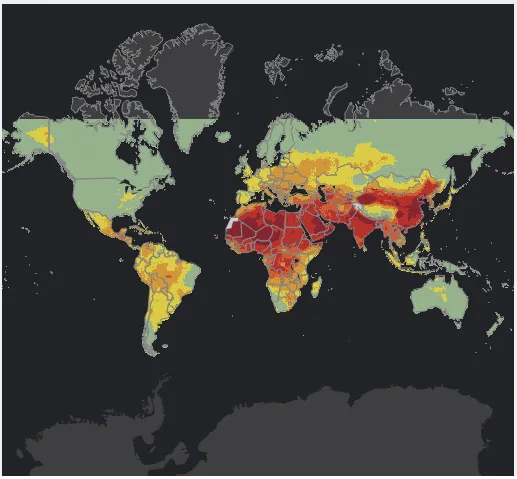Nine in Ten People Worldwide Breathe Dangerous Air Every Day
The WHO just released the most detailed air pollution report ever—and the results are sobering
/https://tf-cmsv2-smithsonianmag-media.s3.amazonaws.com/filer/de/da/deda9ae4-c27b-48c0-8960-834555e8d786/istock_28129262_large.jpg)
You can’t see it, but the air around you is vital to your health. A breath of fresh air brings oxygen to your body and can put a smile on your face. But nine out of ten people worldwide shouldn’t be smiling when they consider the air they have to breathe. That’s the latest from the World Health Organization, writes Adam Vaughan for The Guardian. The agency just released a report that confirms that 92 percent of the world’s population lives in places where air pollution levels are above acceptable norms.
The new report represents the latest in air monitoring data. The report documents particulate concentrations in the air, focusing on fine particles 2.5 microns across, which are known as PM2.5s, Vaughan explains. This minute class of particulate can harm human lungs. But according to the WHO’s PM2.5 guidelines, which are being updated this year, more than ten micrograms per cubic meter are acceptable.
In the vast majority of areas studied, however, the amounts of air pollution exceeded those levels. A whopping 98 percent of cities in low- and middle-income countries with more than 100,000 people didn’t meet the guidelines (that number is 56 percent in high-income countries.) But the report on urban air quality isn’t the entire picture. In some rural areas, concentrations of air pollution are even higher than in urban areas, especially in the Eastern Mediterranean and African regions, which are close to deserts that experience major dust storms. (Coal, diesel fuel, and transportation all contribute to the manmade causes of air pollution.)

The report also had more sobering news to share. It breaks down the number of deaths due to outdoor air pollution—an estimated 3 million per year. Ninety-four percent of those deaths occurred due to noncommunicable diseases like lung cancer, cardiovascular disease and stroke, all of which have been linked to air pollution. And the vast majority of those deaths—90 percent—occurred in poorer countries.
China topped the list of the most air pollution deaths, with more than one million in 2012 alone. In that same year, around 600,000 people died from air pollution in India, while 140,000 died in Russia. Ukraine, however, had the most air pollution-related deaths per capita, with 120 per 100,000 people.
There was good news for one region: the United States. The Americas was the only region in the report that had more than 20 percent of its population living in places that comply with the standards. But there are nonetheless 12 air pollution-related deaths per 100,000 people in the United States, where an estimated 38,043 people die from air pollution each year.
The report was compiled by scientists from eight international institutions. They used data from over 3,000 locations, including satellite, ground station and air transport information to assemble the report—according to the WHO, it’s the most detailed of its kind ever conducted.
If the numbers shock you, blame a former dearth of data for telling only part of the story. The WHO’s public health and environment director tells Vaughan that countries are now “confronted with the reality of better data….Now there are no excuses for not taking action.” The more air pollution data there is, the worse the picture seems to get. But hopefully, that clearer, bleaker reality will help people take a breath of fresh (and clean) air worldwide one day.
/https://tf-cmsv2-smithsonianmag-media.s3.amazonaws.com/accounts/headshot/erin.png)
/https://tf-cmsv2-smithsonianmag-media.s3.amazonaws.com/accounts/headshot/erin.png)